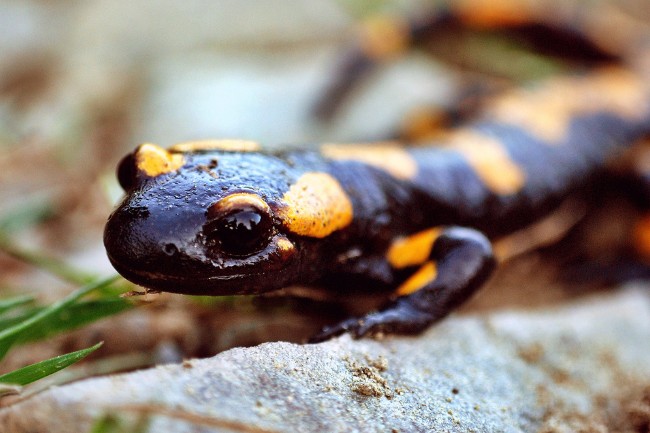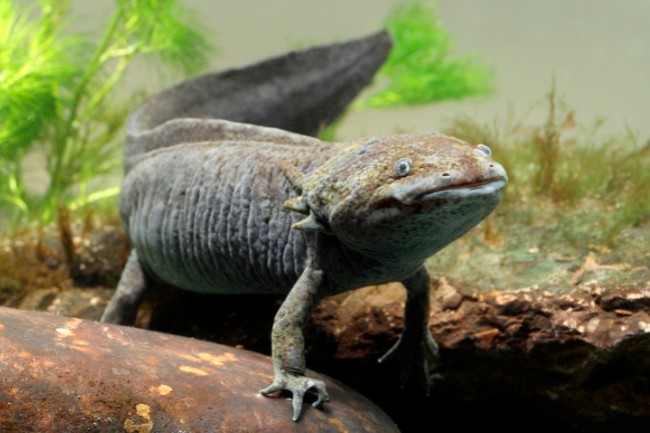When it comes to the ability of some animals to regrow whole limbs if they are damage, it can appear something like magic. In the wild, losing a limb isn’t unusual due to predation, defense of a territory or pure bad luck. Though some individuals manage to find a way to survive, for most such a serious loss results in death.
This amazing ability is well documented in many amphibian species, particularly salamanders, so it’s no surprise that many people assume frogs also have the ability to regrow lost appendages. Below we discuss whether frogs can regrow limbs and what this means for them.

Regeneration in Animals
The regeneration of limbs isn’t a common phenomena in animals, although it would be incredibly useful. Starfish are famous for their ability to regenerate. Well-known for their multiple arms, starfish can actually regrow a whole new body from a single remaining arm.
While this is an unusually impressive regeneration ability, most animals are more likely to die if their main body is damaged, such as their head or abdomen. Therefore it’s often the ability to regrow individual limbs or tails that is possible.
| Frog Species | Limb Regeneration Capability | Regrowth Speed | Notable Regeneration Traits |
|---|---|---|---|
| Axolotl | High | Rapid | Remarkable ability to regenerate complete limbs |
| African Clawed Frog | Moderate | Moderate | Can partially regrow limbs and repair damaged tissue |
| American Bullfrog | Limited | Slow | Limited regenerative capabilities, minimal limb regrowth |
| Tree Frog | Limited | Slow | Limited ability for limb regeneration, focus on tail regrowth |
In axolotl, the ability to regrow limbs comes from their use of stem cells to rebuild what was lost. Some animals can regrow damaged or amputated appendages, but only in a simplified, less workable form. In lizards, it’s common for them to lose their tail to sacrifice it when escaping a predator. Unfortunately, the replacement will be missing the spinal cord and nerves, instead being a fairly simple cartilage structure.
For many animals, there’s a cut-off point, quite literally, to where they can regenerate from. In worms for example, being cut in half is survivable as long as their main organs are intact, but if the cut it too high up they will be too damaged to recover.

The Regenerative Abilities of Frog Legs
Frog legs are well-known as a delicacy in France, so perhaps it’s somewhat unfortunate that frogs can’t regrow them. Although regrowing limbs isn’t unusual in the amphibian world, frogs appear to have missed out on this particular trick.
The one saving grace most frog species have is that they can correct the mistakes of their youth. Tadpoles, and very young froglets, are able to regrow limbs if they become damaged or are lost. Although tadpoles do not start out with limbs, they first grow back legs, and later front legs.
For most tadpoles their young life can be extremely precarious, with birds, fish, and even insects happy to make them their dinner. During their many lucky escapes, it’s easy to lose a limb that could result in spending the rest of their adult lives at a disadvantage, so it’s lucky they can get a second chance to keep on hopping.
As well as young frogs, the only other species known to getting close to regrowing a limb is the African clawed frog. This aquatic species needs its limbs both to swim and catch its food. Unlike, most frogs this species doesn’t have a long extendible tongue with which to snatch its prey. Instead it uses its claws to grab the prey and stuff it in its mouth.
| Factor | Influence on Regeneration | Notes |
|---|---|---|
| Age | Younger frogs generally regenerate limbs more effectively | Regeneration capacity may decrease with age |
| Severity of Injury | Greater injuries may hinder or slow down the regeneration process | Extensive damage can limit or impair regeneration |
| Environmental Factors | Proper habitat conditions and nutrition support regeneration | Adequate resources promote optimal regenerative capabilities |
| Genetic Factors | Genetic variations may impact regeneration abilities | Some frog species possess inherent differences in regenerative potential |
While the African clawed frog does have the advantage over other frogs to be able to regrow something similar to its original limb, it isn’t fully functioning. Similar to a lizard’s regrown tail, it doesn’t regain full movement, and only approximates the shape of the original limb.

Also read: Do Frogs Have Hair? What is Frog ‘Hair’ Exactly
The Process of Regrowing Frog Legs
One fascinating new discovery is that frogs can regrow limbs, if given the right kind of medication. Scientists, looking to understand more about cell regeneration, used a silicone cap, which they call a BioDome, placed directly over the wound.
The cap contained a silk protein gel with a five-drug cocktail. Each drug served a different purpose to encourage the regrowth of a healthy limb. In the majority of frogs tested a fully functioning limb regrew, including bones and nerve endings. Though the limbs did have some missing elements, such as toes, this is a significant scientific breakthrough.
The tests were carried out on the African clawed frog, which is already know for regrowing limbs, though not with the ability to become fully functioning. Whether similar drug treatments would allow other frog species to regrow limbs isn’t clear.
The Importance of Frog Leg Regeneration
The scientific interest in the limb regeneration abilities of other animals, stems largely from the hope that one day we could use a understanding of how other animals regenerate to be able to regrow our own limbs. Whether this would be on our bodies, or in a lab, being able to replace limbs that have been damaged or do not function properly, would be an amazing achievement.
To date, our understanding of how animals regenerate has grown and developed to the point that scientists feel the dream scenario of offering patients the chance to have a new limb, might not be science fiction, but simply a matter of time.
Yet of course, researching an animals ability to replace its limbs, usually requires removing them first. While the scientific breakthroughs are astounding, as always there is an ethical debate about work that harms living creatures.
Conclusion
Unfortunately, frogs aren’t among the amphibian superstars that can regrow their limbs whenever they require new ones. Even the African clawed frog can only grow an approximation of what it once had.
The fact that young tadpoles and froglets can regain their limbs is a small blessing, though adult frogs would also benefit from such a magic trick.
In a world where every large bird, fish and mammals, would quite like to tear off a limb for a quick snack, there’s certainly a big risk that frogs will end the day with one less limb than they started it. Unfortunately for most such a disaster would lead to death. So best that frogs keep hopping along, one step ahead of those that might want to take a bite.

